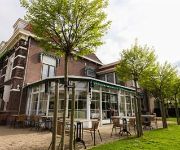Facts and Data
Webpages:
Official Unesco Page
Stichting Werelderfgoed
The Beemster Polder
Beemster
Basis Data:
Unesco World heritage since: 1999
Size of heritage:
Coordinates:
Longitude: 4,911°
Latitude: 52,549°
Summary
The Beemster Polder, dating from the early 17th century, is is an exceptional example of reclaimed land in the Netherlands. It has preserved intact its well-ordered landscape of fields, roads, canals, dykes and settlements, laid out in accordance with classical and Renaissance planning principles.
Location on Map
Show bigger map on Openstreetmap
Introduction
The Droogmakerij de Beemster, also known as the Beemster Polder, is a UNESCO World Heritage site located in the Province of Noord-Holland, Netherlands. This remarkable site is renowned for its innovative land reclamation techniques and its well-preserved 17th-century landscape.
History
The Beemster Polder was created during the Dutch Golden Age in the early 17th century. The area was originally a shallow lake, but due to the increasing demand for agricultural land, plans were made to drain and reclaim it. In 1607, the Dutch engineer Jan Adriaanszoon Leeghwater designed an ingenious system of canals, ditches, and windmills to pump out the water and create fertile farmland.
The construction of the Beemster Polder began in 1608 and was completed in 1612. The project was a remarkable engineering feat for its time, as it involved the drainage of an area of approximately 70 square kilometers. The reclaimed land was divided into geometric plots, forming a unique pattern of squares and rectangles.
Current State
Today, the Beemster Polder remains an exceptional example of Dutch land reclamation and agricultural planning. The landscape has been remarkably well-preserved, maintaining its original layout and structure. The geometric pattern of fields, roads, and canals is still visible, providing a glimpse into the innovative planning and design of the 17th century.
The agricultural practices in the Beemster Polder have also evolved over time. While traditional farming methods were initially employed, modern techniques and technologies have been introduced to enhance productivity and sustainability. The fertile soil of the polder continues to support a diverse range of crops, including vegetables, flowers, and dairy farming.
The Beemster Polder is not only valued for its agricultural significance but also for its cultural and historical importance. The well-preserved 17th-century villages within the polder, such as Middenbeemster and De Rijp, showcase traditional Dutch architecture and provide a glimpse into the past. These villages have retained their historic character, with charming houses, churches, and windmills that add to the overall beauty of the landscape.
The UNESCO World Heritage designation has played a crucial role in preserving and protecting the Beemster Polder. It has raised awareness about the historical and cultural significance of the site, leading to increased conservation efforts. The local community, along with various organizations and authorities, actively work together to ensure the sustainable management and preservation of the polder.
Conclusion
The Droogmakerij de Beemster, or Beemster Polder, is a UNESCO World Heritage site that showcases the remarkable land reclamation techniques of the Dutch Golden Age. Its well-preserved 17th-century landscape, with its geometric pattern of fields and villages, provides a unique glimpse into the past. The polder continues to be an important agricultural area, supporting a variety of crops and showcasing the evolution of farming practices. The Beemster Polder's UNESCO designation has played a vital role in its preservation and conservation, ensuring that this historic and cultural landscape will be enjoyed by future generations.
Hotels and places to stay
Hampshire Golfhotel Waterland
Van der Valk Hotel Purmerend
Hotel Villa GROET uit Avenhorn
De Gouden Karper
Videos from the area
Videos provided by Youtube are under the copyright of their owners.











